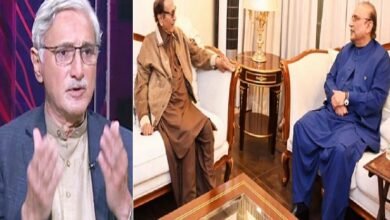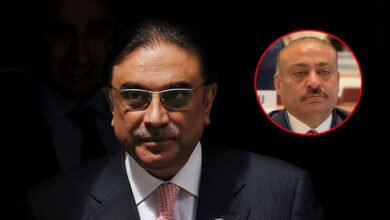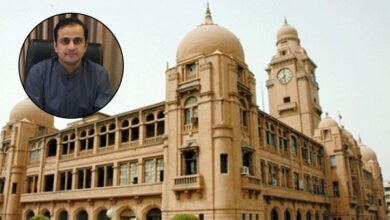PML-N faces the brunt of Asif Ali Zardari’s compromising style of politics
After PPP itself, PML-N faced the brunt of the compromising style of politics of Asif Ali Zardari

After Pakistan People’s Party itself, Pakistan Muslim League Nawaz (PML-N) faced the brunt of the compromising style of politics of the PPP co-chairman Asif Ali Zardari in the shape of losing its stronghold in the hands of political rival Pakistan Tehreek-e-Insaf (PTI) in the recent Punjab by-elections.
Asif Ali Zardari is known as a clever politician who knows well when and where to play the cards in national politics, whereas, he is also known for his compromising style of politics, especially to please the establishment, instead of choosing aggressive stances.
A timeline of major political events since 2008 was the defining moment for the PPP when its downfall started after its leadership came into the hands of Asif Ali Zardari.
Just after the assassination of former prime minister Benazir Bhutto late, Asif Ali Zardari took control of the political party while his son Bilawal Bhutto Zardari, who was having no experience in national politics, was made the PPP chairman.
The PPP was having massive public following in 2008 and in the general elections, it won a majority in the parliament to form a government. Asif Ali Zardari chose to become president of Pakistan after PPP came into power.
He made a courageous move by notifying Inter-Services Intelligence (ISI) a sub-ordinate institution of the Ministry of Interior. Following the decision, a statement from the military’s media wing, Inter-Services Public Relations (ISPR) was issued following the Corps Commanders Conference. Zardari surrendered and withdrew the notification.
The PPP co-chairman compromised its political decision for the second time when the then prime minister Yousaf Raza GIllani was disqualified and Makhdoom Shahabuddin was nominated for the position. After a huge outcry on media, Zardari stepped back and later Raja Pervaiz Ashraf from Rawalpindi was chosen for the prime minister’s office.
He surrendered for third time in Memogate scandal as he trapped Hussain Haqqani and managed to save himself.
Despite Zardari managed to complete his tenure in public office, his political party lost its roots in the nation and PPP turned into a political party of rural Sindh.
Asif Ali Zardari continued his mastery of political compromises during Pakistan Tehreek-e-Insaf (PTI) government as he acted as a bridge between PML-N and the establishment to make a political compromise. The situation would be different if Nawaz Sharif and Maryam Nawaz remained the strong political figures in the incumbent government after the toppling of the PTI government.
Asif Ali Zardari was the first person who suggested Shehbaz Sharif for the prime minister’s office. Following his suggestion, Shehbaz Sharif was elected as the prime minister despite he was facing mega corruption cases.
In another compromise, he built an alliance with Muttahida Qaumi Movement Pakistan (MQM-P) which has lost its vote bank in its stronghold Karachi and other urban parts of Sindh.
He successfully diverted the public outrage towards the ruling PML-N which took tough decisions amid a severe economic crisis and skyrocketed the inflation rate and fuel prices. By remaining on the back foot, Zardari managed to get political relief and possess important ministries in the Centre. However, his own political party and the ruling PML-N faced the brunt and lost their political reputation amongst the nationals.
Due to his compromising style of politics, the narrative built by PML-N was completed destroyed and it was forced to agree on all conditions which backfired. The results of the Punjab by-elections were a major setback for PML-N witnessing a humiliating defeat in its stronghold in the hands of PTI which adopted a strong narrative against the establishment and controversial toppling of the elected government.



